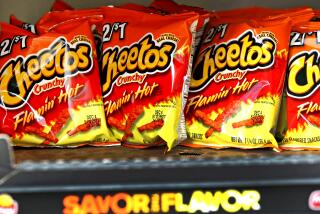Green smiley faces entice kids to eat vegetables, ditch chocolate milk
Crusaders in the fight against childhood obesity have discovered a powerful new weapon – the green smiley-faced emoticon.
When placed near cartons of plain nonfat milk in school cafeterias, the proportion of kids who put them on their trays skyrocketed from 7.4% to 48%, researchers reported this week. That’s an increase of 549%.
The smiley emoticons also prompted kids to select more vegetables. Before the green faces entered the cafeteria of a Cincinnati elementary school, students purchased an average of 0.74 servings of veggies at lunch. After the emoticons arrived, average vegetable purchases rose to 1.2 per student per day – a 62% increase.
The smiley faces were only the first part of a two-pronged strategy to encourage the kids to choose healthful foods. The second step was to reward students for selecting a “Power Plate,” a lunch that included an entree made with whole grain, a side of fruit, a side of vegetables, and plain nonfat milk to wash it all down. Children who put together a “Power Plate” meal were eligible to receive a sticker, a temporary tattoo or another small prize.
After five months, the emoticons proved more effective than the prizes. The bribes didn’t cause the school’s 297 students to pick more whole-grain entrees, the researchers found.
But after the smiley faces arrived on the scene, not only did kids buy more plain nonfat milk and vegetables, they also ordered more fruit and less chocolate milk. Average fruit purchases rose 20%, from 1 to 1.2 servings per student per day, and the proportion of kids who purchased chocolate milk plunged from 86.5% to 44.6%.
“Poor food selection in school cafeterias is a risk factor for childhood obesity,” the researchers wrote. So they were gratified to find that their experiment was “very effective” in convincing kids in this “inner city school” to ditch some of their bad habits and make more healthful choices.
“It looks like we found a very promising, low-cost and effective way of improving the nutrition of elementary school children,” the study leader, Dr. Robert Siegel of the Center for Better Health and Nutrition at Cincinnati Children’s Hospital Medical Center, said in a statement.
Siegel presented the study this week at the Pediatric Academic Societies annual meeting in San Diego.
For more medical news, follow me on Twitter @LATkarenkaplan and “like” Los Angeles Times Science & Health on Facebook.







